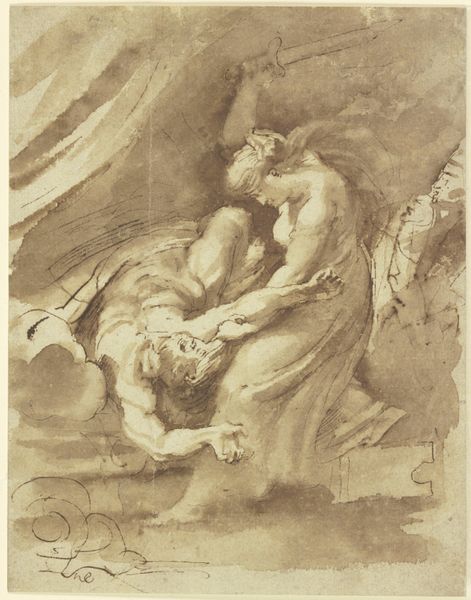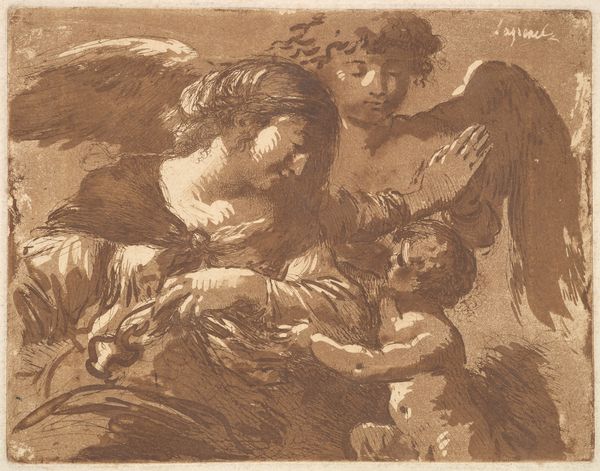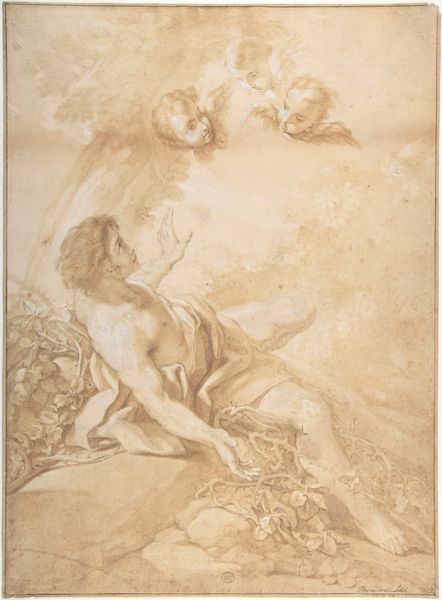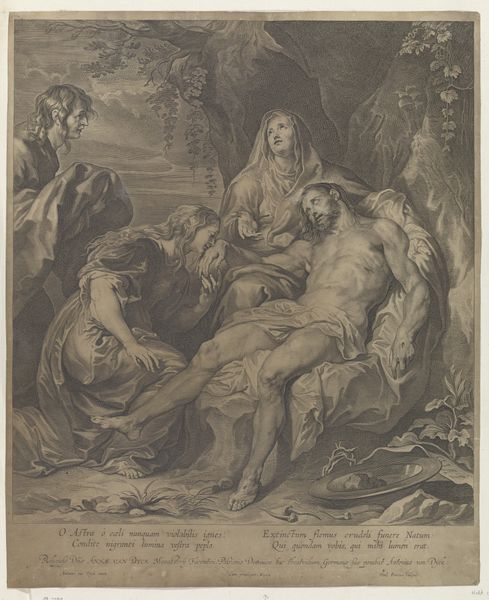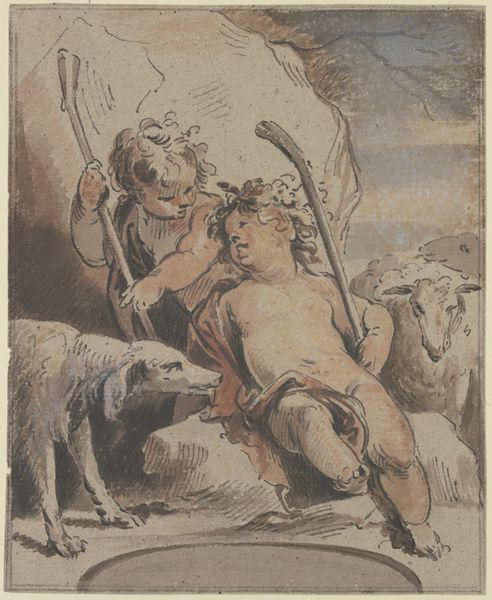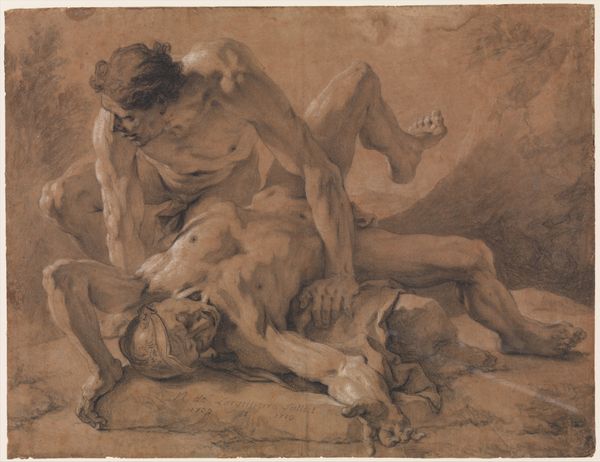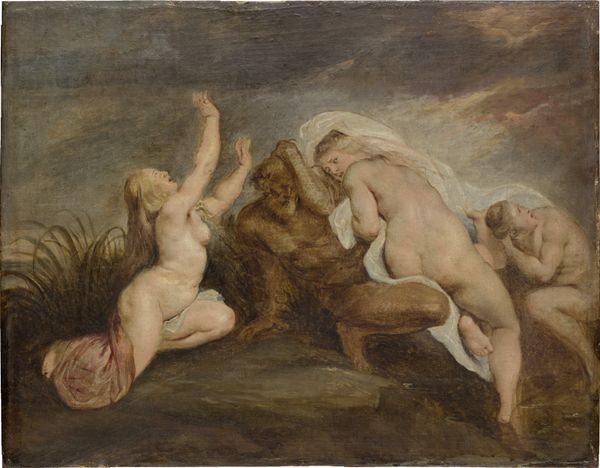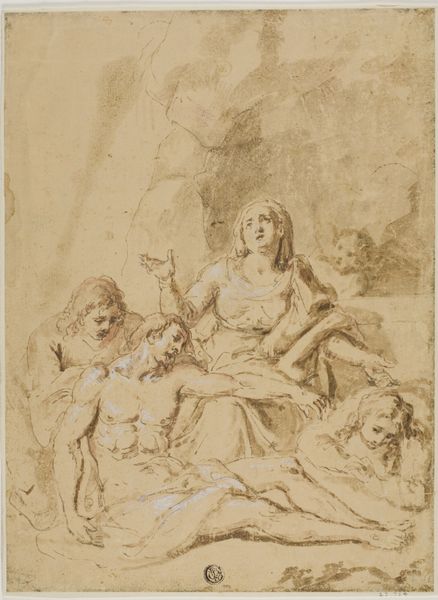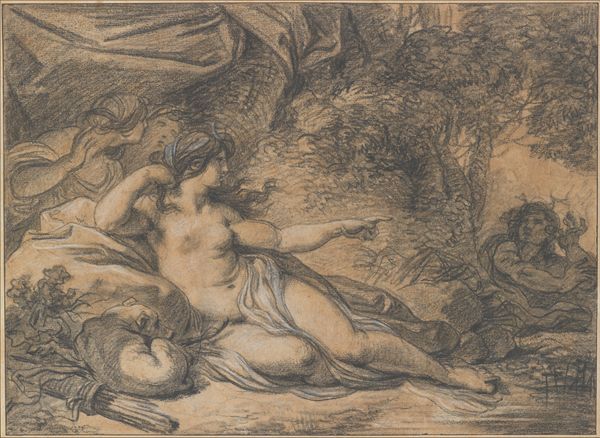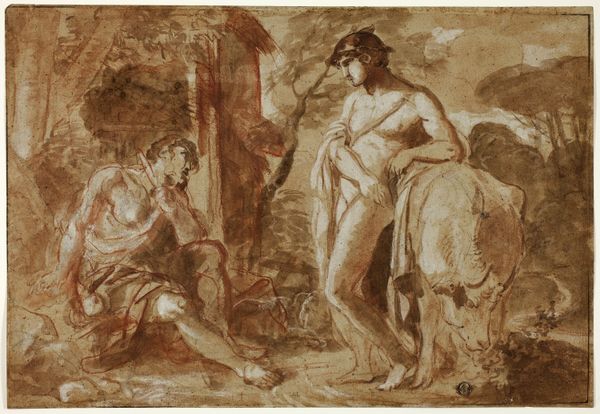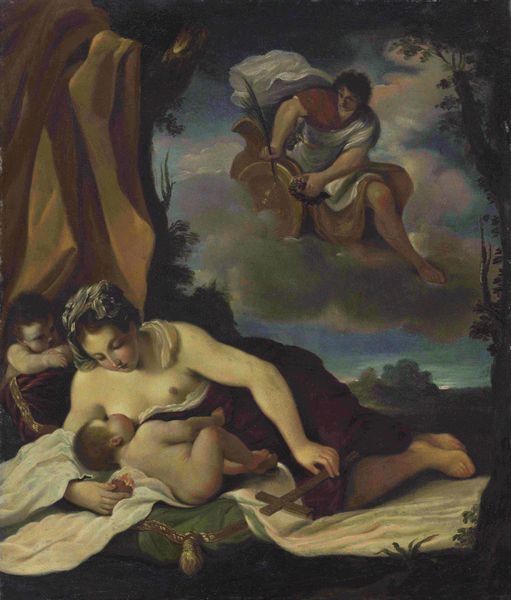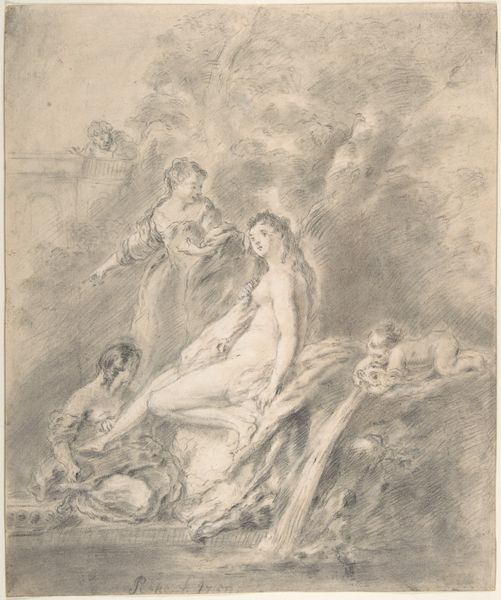
drawing, pastel
#
drawing
#
allegory
#
baroque
#
oil painting
#
portrait drawing
#
pastel
#
nude
#
portrait art
#
erotic-art
Dimensions: 444 mm (height) x 343 mm (width) (bladmaal)
Editor: So, this is "Jupiter og Antiope," made sometime between 1625 and 1677. The museum lists the artist as Heinrich Dittmers, and the medium is drawing – a combination of pastel and what looks like oil. I'm struck by the… almost predatory gaze of Jupiter. How should we interpret it? Curator: That's a perceptive reading. Think about Jupiter, or Zeus in the Greek pantheon. He embodies power, but also embodies *desire* – often expressed through trickery. Consider Antiope’s slumber. What does sleep represent symbolically? Editor: Vulnerability, maybe? Lack of control? Curator: Precisely. The eroticism isn't just about nudity; it's about that power dynamic, that unveiling of vulnerability. See the bow and quiver discarded at her feet. Consider also the history of portraying female nudes by male artists; do they truly reflect female agency, or perpetuate societal objectification? Editor: That adds a whole new layer. It's not just a mythological scene; it reflects power and its abuse through art itself. Curator: Indeed. And look how Dittmers renders Jupiter - his gaze is almost grotesque. It could be argued that Dittmers comments on unchecked authority. Do you notice any contrasting symbols? Editor: I hadn't noticed… the drape? It feels luxurious but could emphasize how Antiope's agency has been reduced. Thanks for shedding light on the symbolism, it really reframed my understanding. Curator: It's fascinating how symbols can layer meaning across centuries and cultures. Analyzing images using psychology and social cues expands our perspectives.
Comments
No comments
Be the first to comment and join the conversation on the ultimate creative platform.
